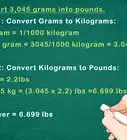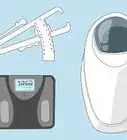This article was co-authored by Michele Dolan. Michele Dolan is a BCRPA certified Personal Trainer in British Columbia. She has been a personal trainer and fitness instructor since 2002.
This article has been viewed 513,724 times.
Your body fat percentage refers to the amount of fat present in your body as a percentage. It includes both essential fat and storage fat. Essential body fat is found in your nerves, bone marrow and organs and cannot be lost without negative side effects.[1] The storage body fat accumulates when excess energy or calories are consumed - this is the type of fat you can safely reduce to either lose weight or lower your body fat percentage.[2] The U.S. Navy has devised a method to calculate your body fat percentage. It uses just a few measurements and a little math to come up with a value that can give you some insight in your health and weight.[3] To measure your body fat percentage, you'll need just a few minutes, a measuring tape, and a calculator. That's it!
Steps
Measuring Your Body Fat
-
1Measure your height. Measure your height while not wearing shoes. In addition, stand straight, head erect and eyes looking forward.
- If you can, have a friend or family member measure your height. It's a bit easier than doing it yourself.
- Call your doctor and ask for your last height if you've had a recent appointment.
- If you're entering the military service, only a service member is allowed to take height measurements.[4]
-
2Measure your waist. Use the circumference of your waist at a horizontal level around the navel for men, and at the level with the least width for women.[5] Your arms should be relaxed by your side.
- Don't pull or suck in your stomach while you're measuring.
- Try to relax and measure as you're exhaling to get the most accurate measurement.
- Keep in mind that BMI does not factor in waist circumference.
Advertisement -
3Measure your neck. Start below the larynx (Adam's apple) with the tape measure perpendicular to the long axis of the neck.[6]
- Try to keep you head straight and look forward. Avoid flaring your neck out.
- Make sure your shoulders are down and relaxed, not hunched.
-
4Measure your hips if you are a woman. Place the tape measure around the largest width of your hips.
- If wearing clothes, pull the tape measure somewhat taught to account for the bulk of your clothing.[7]
-
5Calculate your body fat percentage. Plug the numbers into the appropriate formulas or use an online calculator to assist you.[8] Round your answer to the nearest full percent.
- When calculating your body fat percentage, ensure that your height is in inches, not centimeters.
- For men, use the following formula: % body fat = 86.010 x log10(abdomen - neck) - 70.041 x log10(height) + 36.76 [9]
- For women, use the following formula: % body fat = 163.205 x log10(waist + hip - neck) - 97.684 x log10(height) - 78.387 [10]
-
6Repeat the measurements. For the most accurate body fat percentage, it's recommended to take all of the measurements 3 times.
- Take the average body fat percentage by adding your 3 results and dividing by 3. This will give you the most accurate measurement.
- If any of your measurements has a discrepancy of more than 1 inch, take an additional 4th measurement and then take the average of all 4 measurements.[11]
Understanding your Body Fat Percentage
-
1Compare your results to healthy standards. Knowing your body fat percentage and where it falls within standard, healthy ranges can give you some insight into your overall health. This may help you determine if you need to lose weight, maintain weight or gain weight.
- For men, body fat percentages should fall: for athletes: 6 to 13%, for general fitness levels: 14 to 17%, for acceptable or average: 18 to 25% and anything above 26% is generally considered to be overweight or obese.[12]
- For women, body fat percentages should fall: for athletes: 14 to 20%, for general fitness levels: 21 to 24%, for acceptable or average: 25 to 31% and anything over 32% is considered overweight or obese.[13]
- Remember, body fat percentage is just one of many numerical values that speaks to your weight and overall health. It's used in combination with a variety of other factors (like BMI, weight and height) to determine what's a healthy weight or body fat percentage for you.
-
2Talk to your doctor. Once you know what your body fat percentage is and where it falls compared to healthy standards, you may want to speak to your primary care physician about your results. This will be especially helpful if you think your body fat percentage is too high or is indicating you're overweight.
- If your body fat percentage is indicating that you may be overweight and you think you may need to lose weight, speak to your doctor about appropriate weight loss plans that would be safe and healthy for you.
- Also ask you physician if excess body fat has any effects on any current health conditions you have or if it increases your risk for certain health conditions.
-
3Consult with a registered dietitian. A registered dietitian is a health and nutrition expert that may be able to give you a diet/meal plan or tips on how to reduce your body fat percentage with foods.
- A dietitian may also be able to evaluate your current lifestyle and give you suggestions on small behavior changes to positively affect your body fat percentage.
- Speak with your primary care doctor. They may know or can refer you to a local dietitian for additional help.
-
4Schedule an appointment with a personal trainer. A personal trainer is a fitness expert that may be able to help you design a workout that can help you build muscle and decrease your body fat percentage.
- Many gyms offer a free or discounted initial personal training session with a staff member.
- Personal training can be expensive. However, it may be worthwhile to meet with a train one to three times just to get an idea of a routine or workouts that would help you reach your goal. Then you can continue on your own.
- Keep in mind that simply hiring a personal trainer will not decrease your body fat percentage. You will have to do hard work of exercising and eating right to see results.
Expert Q&A
Did you know you can get expert answers for this article?
Unlock expert answers by supporting wikiHow
-
QuestionEven using a calculator I cannot figure this formula out. I have tried it many different ways and keep coming up with a number that is way too high to be correct. What can I do?
 Michele DolanMichele Dolan is a BCRPA certified Personal Trainer in British Columbia. She has been a personal trainer and fitness instructor since 2002.
Michele DolanMichele Dolan is a BCRPA certified Personal Trainer in British Columbia. She has been a personal trainer and fitness instructor since 2002.
Certified Fitness Trainer There are many BMI calculators online. Look for one where you simply fill in the blanks with your information. One key thing to remember is that you use the right measurement units. If your know your weight in pounds, keep your other measurements in feet and inches. If you know your weight in kilograms, use centimeters for your height and other measurements. Don't use symbols like ' or ". Just enter the number. Here's a good one: http://www.calculator.net/body-fat-calculator.html
There are many BMI calculators online. Look for one where you simply fill in the blanks with your information. One key thing to remember is that you use the right measurement units. If your know your weight in pounds, keep your other measurements in feet and inches. If you know your weight in kilograms, use centimeters for your height and other measurements. Don't use symbols like ' or ". Just enter the number. Here's a good one: http://www.calculator.net/body-fat-calculator.html -
QuestionHow do you calculate the percentage of calories from fat?
 Michele DolanMichele Dolan is a BCRPA certified Personal Trainer in British Columbia. She has been a personal trainer and fitness instructor since 2002.
Michele DolanMichele Dolan is a BCRPA certified Personal Trainer in British Columbia. She has been a personal trainer and fitness instructor since 2002.
Certified Fitness Trainer
-
QuestionHow do they measure body fat?
 Michele DolanMichele Dolan is a BCRPA certified Personal Trainer in British Columbia. She has been a personal trainer and fitness instructor since 2002.
Michele DolanMichele Dolan is a BCRPA certified Personal Trainer in British Columbia. She has been a personal trainer and fitness instructor since 2002.
Certified Fitness Trainer
Things You'll Need
- Measuring tape
- Calculator
References
- ↑ http://www.humankinetics.com/excerpts/excerpts/normal-ranges-of-body-weight-and-body-fat
- ↑ http://www.humankinetics.com/excerpts/excerpts/normal-ranges-of-body-weight-and-body-fat
- ↑ http://www.nhrc.navy.mil/programs/BodyFat/results.html
- ↑ http://www.dtic.mil/whs/directives/corres/pdf/130803p.pdf
- ↑ http://www.dtic.mil/whs/directives/corres/pdf/130803p.pdf
- ↑ http://www.dtic.mil/whs/directives/corres/pdf/130803p.pdf
- ↑ http://www.dtic.mil/whs/directives/corres/pdf/130803p.pdf
- ↑ https://www.getfit.tn.gov/calculators/calc-body-fat.aspx
- ↑ http://www.dtic.mil/whs/directives/corres/pdf/130803p.pdf
- ↑ http://www.dtic.mil/whs/directives/corres/pdf/130803p.pdf
- ↑ http://www.dtic.mil/whs/directives/corres/pdf/130803p.pdf
- ↑ http://www.webmd.com/diet/body-fat-measurement?page=2
- ↑ http://www.webmd.com/diet/body-fat-measurement?page=2
- ↑ http://www.dtic.mil/whs/directives/corres/pdf/130803p.pdf
- ↑ http://www.webmd.com/diet/body-fat-measurement?page=3
About This Article
Before you measure your body fat using the US Navy method, measure your height, waist, neck, and hips with a tape measure. It may be helpful to have a friend help you measure yourself, especially for your height. After measuring yourself, use the US Navy method to calculate your body fat percentage. Once you figure out your percentage, talk to your doctor to make sure you’re in a healthy range. If you’re outside of the healthy range, consider seeing a dietician, who can help you make changes to your lifestyle to reduce or increase your body fat levels. To learn how to use a formula to calculate your body fat with the US Navy method, read more from our Trainer co-author.
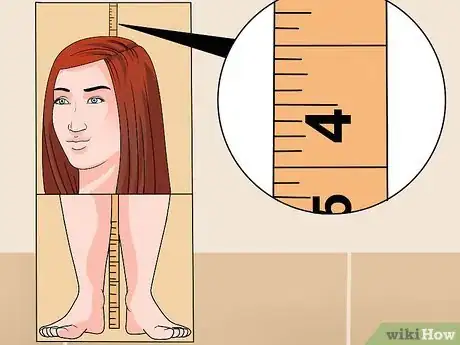


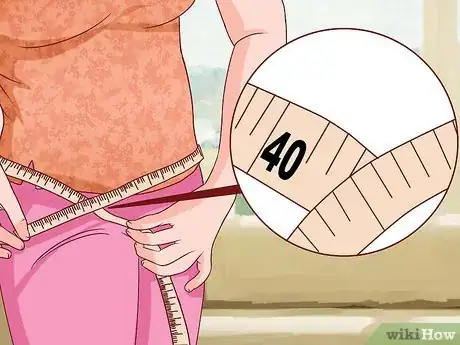
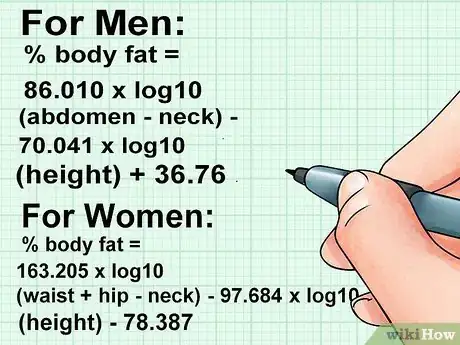
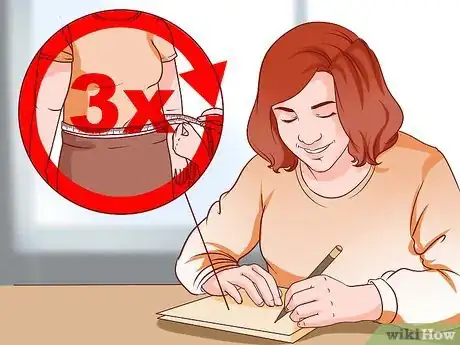




-Step-14-Version-3.webp)
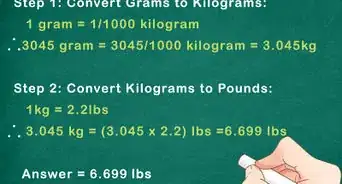




















-Step-14-Version-3.webp)
